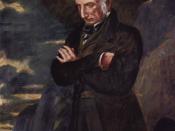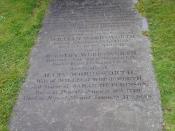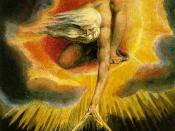Optimism and Pessimism in London Literature
Two intelligent people can see the same thing yet perceive it differently based upon their attitudes. Many look at the ugliness of London and reveal in it while others compare it to beauty as a counterpoint. London in the eighteen hundreds was not a pleasant setting and authors treat it differently through imagery, tone, and diction in "London, 1802" by William Wordsworth and William Blake's "London".
Authors' use imagery to depict certain aspects and characteristics of a certain time period and use the language to appeal to the senses. While Wordsworth recognizes the ugliness of London, he applies his imagery to beauty, purity, the past, the pristine world of Milton. Blake's imagery focuses on ugliness, filth, and disease of the people due to the poverty level. Wordsworth longs to escape the distress of the year in London and return to its previous state.
He describes "[the] need of" John Milton, a previously famous poet, in London to assist in overcoming its current ugliness. Wordsworth considers the positive solutions to the ugliness contrasting Blake's non-solution griping to the ugliness currently beleaguering London. Blake sees the truth to his surroundings and emphasizes it to capacity. The "infant's cry of fear" (ln 6) depicts the poverty and despair of the commoner and places it in the eyes of everyday people. Imagery is not the only tool that these two authors use to display their point of view; tone is another major device.
Wordsworth isolates the coherent solutions in "London, 1802" and allows the reader to optimistically see into the eyes of the setting through tone. Imaginatively speaking to Milton, Wordsworth describes the current life to life in the past. London needs "manners, virtue, freedom, [and] power" (8) for every man. His tone...


